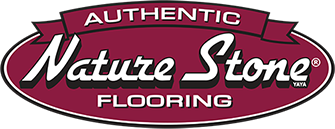Why Polyaspartic Epoxy Flooring is More EXPENSIVE Than They Tell You
Revealing The Hidden Costs of Polyaspartic Epoxy Flooring
When homeowners or business owners are in the market to upgrade their floors, they may come across a seemingly popular choice: polyaspartic epoxy flooring. Many vendors tout this as a durable, long-lasting, and cost-effective option. However, the reality can be quite different. The truth is that this is a trendy choice that comes with many hidden costs that can quickly drive up the price.
When you’re getting ready to plan your budget for a home remodeling project or business renovations, here are some important cost factors you need to keep in mind:
1. Questionable Quality of Polyaspartic Epoxy
While it’s true that polyaspartic epoxy flooring is marketed as being durable, the quality can vary widely between brands, products, and installers. When you’re working with a vendor, you should always ask about what specific product they will be using and do further research to see if it lives up to the salesman’s claims.
For example, some contractors may use a lower quality product that will not hold up as well against wear and tear, without passing the savings on to you. If you want your floors to last, it may be best to skip the polyaspartic epoxy and opt for a better, time-tested flooring product.
2. The Skill and Experience of the Installers
Another factor that can add to the cost of your installation is the skill and experience of the installers. Installing this flooring is a highly specialized process that takes training and expertise, as well as specialized gear. This costs money. Because of this, the final price often ends up being much more than the initial quote.
There are contractors that don’t charge as much, but this is also a problem. If the installers are not properly trained or experienced, they’re not going to properly prep the surface, apply the coating, or cure the flooring, all of which can result in a lower-quality final product that won’t last as long. So you have two choices: pay more up front, or pay more later to repair a shoddy installation.
3. The Condition of the Existing Floor
Polyaspartic epoxy can be installed on top of a wide range of existing floors, but the condition of that floor can have a significant impact on the final cost. For example, if the existing floor has damage, cracks, or unevenness, it will take extra time and materials to properly prepare the surface and ensure there is a good, clean installation. This is especially true in garages and basements, which typically have a concrete surface.
In addition, some floors may require additional treatments, such as moisture barriers or leveling compounds to ensure that the epoxy adheres properly. This is essential for basements and garages, and additional steps can add a lot to the final cost of the project.
4. The Size and Shape of the Area
This factor may seem counterintuitive: Generally speaking, the larger the area, the lower the cost per square foot. If the area is very small, the cost per square foot will be much higher. The setup time will be similar in both cases, and you may have minimum fees to cover.
The shape of the space is an even bigger factor. Anything that contractors will have to work around, such as steps, inset drains, doorways, support columns, and more will make an installation more complex, and in turn, more expensive.
5. Additional Customizations or Features
Finally, if you want to add customizations or features to your polyaspartic epoxy flooring, this can add a significant amount to the overall cost. For example, if you want patterns, designs, or specific colors, this can require additional time, materials and labor. In other words, if you want the floor to match your home’s aesthetic and décor, it will cost you!
Additionally, if you want to add special features such as slip-resistant coatings, this will significantly increase the cost of the project. Worse still, many contractors don’t even offer these features, or don’t have the experience and equipment needed to install them correctly – and if that’s the case, beware. You don’t want to use an inexperienced contractor, even if it saves you a few bucks!
Conclusion:
Beware of glitzy websites and alluring sales pitches that make polyaspartic epoxy flooring seem like an affordable option. There are more hidden costs than contractors and salesmen like to disclose, and those costs can add up pretty quickly. Before you know it, you’ll be spending a lot more than you had planned.
Instead, try Nature Stone®. In garages and basements, Nature Stone®’s proprietary technology eliminates puddles and slipping hazards, and inhibits the growth of mold and mildew.
One of the great benefits of Nature Stone® is that it was designed from the ground up to make livable spaces out of basements and garages. It’s formulated to deal with the moisture that is so often a part of spaces like that. When you start with Nature Stone®, everything that comes after will be improved – and it does it at a price you can afford!


